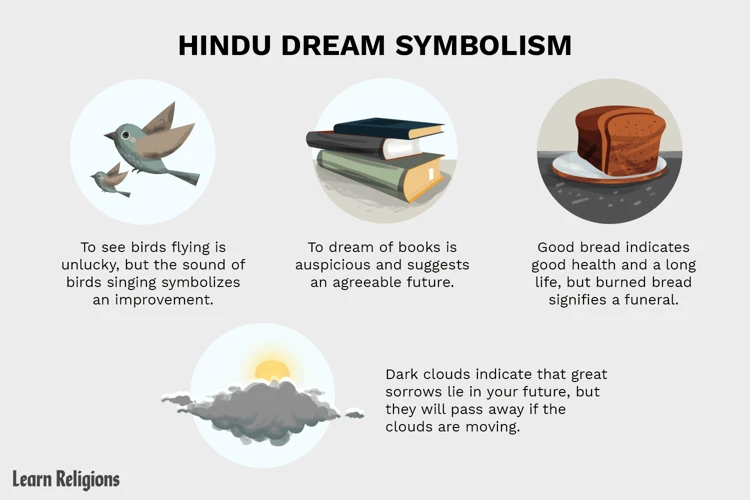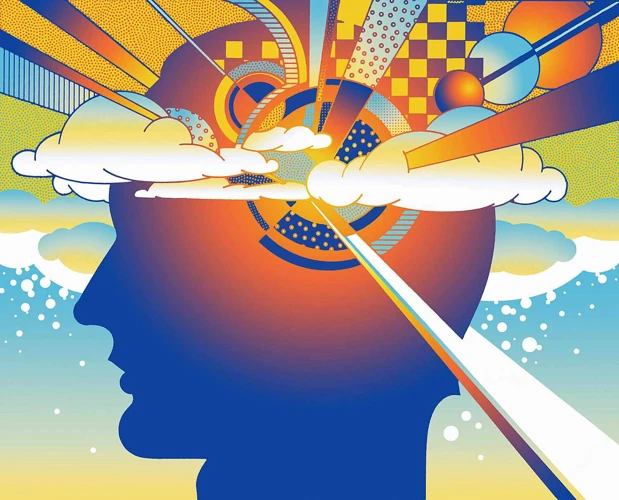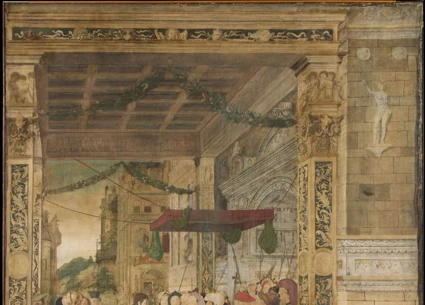Dreams have intrigued and perplexed humans for centuries. Across different cultures, these mysterious experiences during sleep have been subject to various interpretations and significance. One intriguing aspect of dream interpretation is the influence of culture. Cultural factors such as beliefs, myths, symbols, and taboos play a crucial role in understanding the meaning behind dreams. In this article, we will explore the profound influence of culture on dream interpretation, delving into the importance of culture, common dream symbols, cultural-specific interpretations, the role of cultural beliefs and myths, and the impact of cultural taboos. Join us on this fascinating journey as we uncover the intricate connection between culture and the fascinating world of dreams.
The Importance of Culture in Dream Interpretation

Culture plays a vital role in dream interpretation, shaping the way individuals perceive and understand their dreams. Each culture has its own set of beliefs, values, and symbols that influence the interpretation of dreams. Cultural norms, traditions, and experiences can significantly impact the meaning assigned to specific dream symbols and events. For example, in some cultures, dreaming of certain animals like a lion may represent power and strength, while in others, it may symbolize aggression or danger. Similarly, the interpretation of colors and numbers in dreams can vary widely across different cultures. The importance of culture in dream interpretation is further highlighted by the fact that symbols can have different meanings depending on the context in which they appear. In one culture, a snake might symbolize creativity and rebirth, while in another, it may represent deceit or evil. The cultural context in which dreams occur plays a crucial role in deciphering their hidden messages and understanding their significance. To truly grasp the meaning of dreams, one must take into account the cultural lens through which they are viewed. Understanding the influence of culture in dream interpretation can provide valuable insights into the subconscious mind and help individuals gain a deeper understanding of their own psyche. To explore this further, let’s examine some common dream symbols across different cultures and how their interpretation varies.
Common Dream Symbols Across Different Cultures

Common dream symbols can bridge the cultural divide, often appearing in the dreams of individuals from diverse cultural backgrounds. Despite variations in interpretation, there are certain symbols that hold significance across different cultures. Here are a few examples:
- Animals: Animals often appear in dreams as powerful symbols. In many cultures, the lion is seen as a symbol of strength, courage, and leadership. Similarly, the snake can represent wisdom, transformation, or even danger depending on the cultural context.
- Colors: Colors play a crucial role in dream symbolism. While interpretations may differ, certain colors have universal meanings. For example, the color red is often associated with passion, energy, and vitality, while blue may represent tranquility or sadness.
- Water: Water is another common dream symbol that holds diverse cultural interpretations. It can represent emotions, purification, or even spirituality. In some cultures, crossing a river in a dream may indicate a significant life transition.
Understanding these common dream symbols is just the first step in deciphering their meaning, as the interpretation of these symbols can vary across cultures. It is essential to consider the cultural context and individual experiences when attempting to understand the message behind these symbols. To delve deeper into the importance of cultural context in dream interpretation, let’s explore how different cultures interpret these symbols in their unique ways.
1. Animals
1. Animals:
Animals are prominent dream symbols across various cultures, and their interpretation can vary significantly. In Western cultures, for instance, common animal symbols include cats, dogs, and birds. Cats are often associated with independence, mystery, and femininity, while dogs symbolize loyalty and companionship. Birds are often seen as symbols of freedom and aspiration. In contrast, Eastern cultures may assign different meanings to these animals. In Chinese culture, the cat is considered a symbol of good luck, while in Japanese folklore, the cat is believed to possess supernatural powers. Similarly, the interpretation of other animals can differ as well. For example, the snake is often associated with danger and deceit in Western cultures, while in certain African cultures, it symbolizes wisdom and healing. To fully understand the meaning of animal symbols in dreams, it is essential to consider the cultural context in which they are interpreted. Dreaming of animals can offer insights into our subconscious desires, fears, or even spiritual connections. By acknowledging the cultural significance of animal symbols in dreams, we can gain a deeper understanding of our own inner thoughts and emotions. If you’re interested in exploring further the link between dreams and future events, you can read our article on dreams and premonitions.
2. Colors
Colors play a significant role in dream symbolism, and their interpretation can vary across different cultures. In dream analysis, colors can represent emotions, moods, and even specific cultural associations. For example, in Western cultures, the color red often symbolizes passion, love, or intensity. However, in some Eastern cultures, red can be associated with luck, prosperity, or celebration. Similarly, the color white can have contrasting interpretations across cultures. In some cultures, white represents purity and innocence, while in others, it may symbolize death or mourning. The interpretation of colors in dreams is not only influenced by cultural associations but also by the context in which they appear. The surrounding elements and the individual’s personal experiences and emotions during the dream play a crucial role in deciphering the meaning behind the color symbolism. Understanding the cultural significance of colors can provide valuable insights into dream interpretation and help individuals gain a deeper understanding of their subconscious mind. To delve further into the importance of context in interpreting dream symbols, follow this link.
3. Water
Water is a powerful symbol that holds great significance in dream interpretation across various cultures. Its meaning can vary depending on cultural beliefs and personal experiences. In many cultures, water is associated with emotions, purification, and rebirth. It can represent the depths of the subconscious mind and reflect the ebb and flow of one’s emotions. For example, in Western cultures, calm and clear water often symbolizes tranquility and peace, while turbulent or murky water may represent emotional turmoil or uncertainty. In Eastern cultures, water is seen as a symbol of wisdom, flexibility, and adaptability. It is viewed as a source of life and spiritual cleansing. In African cultures, water is often associated with spiritual healing and purification rituals. The interpretation of water in dreams also depends on the context in which it appears. For instance, standing by a calm and serene river might signify emotional stability and balance, while being caught in a raging flood could indicate overwhelming emotions or a sense of being overwhelmed in waking life. The neurological processes that occur during dreaming can shed light on the significance of water in dreams. Research indicates that the brain’s limbic system, which is responsible for processing emotions, is highly active during REM sleep, the stage in which most vivid dreams occur. This suggests a strong connection between emotions and dreaming. Understanding the cultural symbolism of water and its connection to emotions can aid in deciphering the deeper meaning behind water-related dream experiences. Whether it represents purification, renewal, or the depth of one’s emotions, water serves as a window into the subconscious mind and provides valuable insights into the dreamer’s inner world. By exploring the cultural influences on dream symbolism, we can gain a deeper understanding of our dreams and their connection to our waking lives.
Interpreting Cultural Specific Dream Symbols

Dream symbols can have different interpretations based on cultural specificities. Understanding these cultural nuances is crucial to accurately interpret dreams and uncover their underlying meanings. Let’s explore three cultural contexts and their interpretations of specific dream symbols:
1. American Culture: In American culture, common dream symbols include cars, houses, and money. Cars in dreams may symbolize personal freedom, independence, or one’s journey in life. Houses can represent the self or different aspects of one’s life, such as relationships or personal goals. Money in dreams may reflect one’s financial concerns or desires for success and abundance.
2. Eastern Culture: Eastern cultures such as those in China, Japan, and India often interpret dream symbols differently. For example, dreaming of a dragon is seen as auspicious and represents power, wisdom, and good fortune. In contrast, dreaming of a snake can symbolize transformation or the awakening of spiritual energy. Lotus flowers are associated with purity and enlightenment, while a white elephant is considered a symbol of good luck and prosperity.
3. African Culture: Dream interpretation in African cultures is deeply rooted in ancestral beliefs and spirituality. Dreaming of ancestors is often seen as a form of communication between the living and the deceased. It is believed that ancestors may provide guidance, warnings, or blessings through dreams. Animal symbols in African cultures also hold significance: a lion may represent courage or leadership, while a snake can signify danger or deceit.
These examples illustrate how cultural context shapes the interpretation of dream symbols. It is crucial to consider these cultural specificities when analyzing dreams, as they provide valuable insights into an individual’s cultural background, beliefs, and experiences. By understanding the cultural significance of dream symbols, we can gain a deeper understanding of ourselves and the world around us. To delve even further into the science behind dreaming and its neurological processes, you can check out this informative article on the science of dreaming.
1. American Culture
In American culture, dream interpretation often takes a psychological approach, focusing on the individual’s emotions, desires, and personal experiences. Psychologists like Sigmund Freud and Carl Jung have influenced the way dreams are understood in American society. According to Freud, dreams serve as a pathway to the unconscious mind and can reveal hidden desires and conflicts. He believed that dream symbols, such as objects and events, represent repressed emotions and experiences. Jung, on the other hand, emphasized the collective unconscious, suggesting that dreams contain archetypal symbols that are shared across cultures and generations. American culture also places importance on the scientific study of dreaming. Advances in neuroscience have shed light on the physiological processes behind dreaming, exploring brain activities during REM sleep and the role of neurotransmitters. Understanding the neurological processes involved in dreaming provides a scientific perspective that complements the cultural and psychological interpretations. To delve deeper into the science of dreaming, you can explore the article on the neurological processes involved in dreaming. By considering both the cultural and scientific aspects, dreams in American culture are seen as valuable sources of self-reflection and self-discovery.
2. Eastern Culture
In Eastern culture, dream interpretation holds deep significance and is often intertwined with spiritual beliefs and practices. Dreams are considered to be a window into the subconscious mind and are thought to reveal important messages from the divine or ancestors. Eastern cultures, such as those influenced by Buddhism and Hinduism, emphasize the interconnectedness of all living beings and the cyclical nature of life and death. Consequently, dream symbols in Eastern cultures often revolve around concepts of karma, reincarnation, and enlightenment. For example, dreaming of a lotus flower symbolizes purity and spiritual growth, while dreaming of a dragon represents power and transformation. In Buddhism, dream interpretation is closely linked to teachings on mindfulness and meditation. Buddhist practitioners may analyze their dreams to gain insights into their own spiritual progress and identify areas for personal growth. Eastern dream interpretation also places emphasis on the emotions and sensations experienced during a dream. The overall atmosphere and feeling of a dream, as well as the interactions with dream characters, are taken into account when deciphering its meaning. Dream interpretation in Eastern culture is a deeply introspective and spiritual practice that offers guidance and understanding in navigating life’s challenges and striving for spiritual enlightenment. To further explore dream interpretation in different cultural contexts, let’s now turn our attention to African culture and its unique interpretations of dream symbols.
3. African Culture
African culture has a rich and diverse tradition of dream interpretation that is deeply rooted in the continent’s history and beliefs. Dreams hold significant importance in many African cultures, seen as a means of communication between the spiritual and physical realms. In African culture, dreams are often considered messages from ancestors or spirits, providing guidance, warnings, or insights into future events. Animal symbolism holds great significance in African dream interpretation. For instance, dreaming of a lion is often seen as a symbol of leadership, courage, and protection, reflecting the revered status of this majestic creature in many African societies. Additionally, water imagery is widely interpreted as a symbol of life, spirituality, and purification in African culture. Dreams involving water can represent emotions, fertility, or even the flow of energy in one’s life journey. The interpretation of colors also varies in African dream analysis. For example, the color red can symbolize vitality and passion, while white represents purity and ancestral spirits. It is crucial to note that interpretations may differ among different African tribes and regions, each with their own unique cultural lens. By embracing the distinct interpretations and symbols within African culture, one can gain a deeper understanding of dreams and their significance in the African context. Understanding the cultural-specific approach to dream interpretation is essential in appreciating the diversity of human experiences and the profound influence of culture on this mystical realm of the mind.
The Role of Cultural Beliefs and Myths in Dream Interpretation

Cultural beliefs and myths have a significant impact on how dreams are interpreted within various societies. These beliefs and myths are often deeply rooted in cultural traditions and passed down through generations. Indigenous cultures, for example, have rich spiritual beliefs that shape their understanding of dreams. They view dreams as a way of receiving messages from the spirit world or ancestors. In these cultures, dreams are considered sacred and carry important insights and guidance. The interpretation of dreams is closely intertwined with the cultural myths and legends that have been handed down over time. These myths provide a framework for understanding the symbols and events that occur in dreams. For instance, in some indigenous cultures, dreaming of an eagle could symbolize wisdom and divine intervention, while in others, it may represent freedom and strength. Religious influences also play a significant role in shaping dream interpretation. In many religious traditions, dreams are seen as a means of communication between humans and the divine. For example, in the Bible, there are numerous accounts of dreams being used to convey important messages and prophecies. Similarly, in Eastern religions like Hinduism and Buddhism, dreams are seen as reflections of karma and a means of spiritual growth. The cultural beliefs and myths surrounding dreams provide a framework for individuals to make sense of their dreams and derive meaning from them. They offer a lens through which dreams can be understood and connected to the larger cultural and spiritual context. Understanding the role of cultural beliefs and myths in dream interpretation is essential in gaining a deeper appreciation for the significance of dreams in different societies. By examining these influences, we can uncover the richness and diversity of dream interpretation across cultures.
1. Indigenous Cultures
1. Indigenous Cultures:
Dream interpretation plays a significant role in many indigenous cultures around the world. These cultures often believe that dreams are a means of communicating with the spiritual realm or ancestors. In many indigenous traditions, dreams are seen as messages from the divine and are often a source of guidance and insight.
– Native American cultures: Native American tribes have a rich tradition of dream interpretation. Dreams are believed to reveal important messages about one’s purpose in life and can serve as precursors to future events. For example, dreaming of an eagle may symbolize strength and vision, reflecting the importance of these qualities in Native American culture.
– Aboriginal cultures: Aboriginal cultures in Australia also place great significance on dreams. Dreaming is seen as a way of connecting with the Dreamtime, a sacred realm that encompasses the creation of the world and all living beings. Dreaming stories and symbols are passed down through generations, carrying valuable knowledge and guidance for individuals and the community.
– Maori culture: In Maori culture, dreams are believed to be a pathway to the spiritual world. Certain symbols and events in dreams are seen as messages from ancestors or spirits. For example, dreaming of encountering a particular animal may represent a spiritual guide or a specific message.
– Inuit culture: Inuit peoples of the Arctic region believe that dreams can reveal hidden truths and provide insights into future events or hunting expeditions. Dreaming of certain animals, such as seals or polar bears, may offer guidance on survival and hunting strategies.
Indigenous dream interpretation often involves a deep connection to nature and the spiritual world. Symbols and events in dreams are interpreted within the cultural framework, drawing on ancestral wisdom and traditional knowledge. It is important to approach indigenous dream interpretation with respect and cultural sensitivity, recognizing the unique beliefs and perspectives of these cultures. By understanding their cultural context, we can gain a deeper appreciation for the profound influence of culture on dream interpretation.
2. Religious Influences
Religion plays a significant role in shaping dream interpretation within different cultures. Religious beliefs and practices often influence how dreams are perceived, understood, and even considered sacred. In many religious traditions, dreams are seen as a means of divine communication or guidance. For example, in Christianity, dreams are mentioned throughout the Bible as a way in which God communicates with believers. Dreams in religious contexts often involve prophetic or symbolic elements that require interpretation.
In Islamic culture, dreams are given great importance and are considered a form of communication from Allah. Muslims believe that dreams can contain messages, warnings, or guidance from the divine. Dream interpretation in Islam is often guided by Islamic scholars who study the teachings of the Quran and Hadiths (sayings of the Prophet Muhammad). Islamic dream interpretation emphasizes the need to interpret dreams within the framework of religious teachings and incorporate moral and ethical considerations.
In Hinduism, dreams are believed to be a reflection of an individual’s past, present, or future karma. Hindus believe that dreams can provide insights into their spiritual journey and may even offer instructions on how to achieve moksha (liberation). Dream interpretation in Hindu culture is often guided by the ancient texts of Hindu philosophy, such as the Vedas and Upanishads, which provide guidelines and symbolism commonly associated with dream experiences.
Buddhism, on the other hand, views dreams as a reflection of a person’s current state of mind and consciousness. Dreams are seen as illusions, similar to the illusory nature of reality in Buddhist philosophy. Buddhist interpretation of dreams often focuses on understanding the impermanence and selflessness of existence.
These religious influences on dream interpretation showcase how cultural and spiritual beliefs shape the understanding and significance attributed to dreams. By considering the religious context, symbols, and teachings within a specific culture, individuals can gain a deeper insight into the spiritual dimensions of their dreams and their own personal beliefs and values.
The Impact of Cultural Taboos on Dream Interpretation
Cultural taboos have a profound impact on dream interpretation, influencing the way dreams are perceived and understood. Taboos are societal restrictions or prohibitions that vary across cultures and can encompass a wide range of subjects, including sex, religion, and social behavior. When it comes to dreams, cultural taboos dictate what is considered appropriate or inappropriate, influencing the interpretation of certain dream themes and symbols. For example, in Western cultures, dreams involving nudity or sexual encounters may be seen as embarrassing or taboo. These dreams are often interpreted as manifestations of repressed desires or unresolved issues. On the other hand, in some Eastern cultures, dreams of nudity or sexual encounters may be considered natural or even auspicious, symbolizing fertility or passion. Another example is the interpretation of dreams involving animals. In certain cultures, dreaming of animals like snakes or rats may be associated with negative connotations, representing danger or disease. These interpretations stem from cultural beliefs and taboos surrounding these animals. However, in other cultures, these same animals may hold positive symbolism, representing wisdom or fertility. It is crucial to consider cultural taboos when interpreting dreams, as they shape the lens through which dream symbols are viewed and understood. By understanding the cultural taboos surrounding dream interpretation, individuals can gain a more comprehensive understanding of their dreams and the messages they may be conveying. The impact of cultural taboos on dream interpretation highlights the unique ways in which cultural factors influence our subconscious experiences and perceptions. To delve deeper into the world of dream interpretation, let’s explore specific taboos and their influence on dreams in Western and Eastern cultures.
1. Western Taboos
1. Western Taboos:
In Western culture, certain topics and themes are considered taboo, and this also extends to dream interpretation. These taboos can greatly influence the way dreams are understood and discussed. One of the prominent taboos in Western society revolves around the topic of death. Dreams involving death or dying are often met with fear and discomfort, as they are commonly associated with negative connotations. This can lead to a tendency to interpret such dreams as foretelling a literal death or a bad omen. However, it is important to approach dream interpretation with a more nuanced understanding.
Another taboo in Western culture relates to sexuality. Sexual dreams can be viewed as embarrassing or inappropriate to discuss openly, leading to a reluctance to explore their deeper meaning. This can prevent individuals from understanding the symbolism and messages within these dreams. Dreams involving relationships, intimacy, or fantasies may carry significant psychological insights but are often overlooked due to societal taboos.
Additionally, dreams involving violence or aggression may also be met with unease and avoidance in Western culture. Violent dreams can evoke feelings of fear, guilt, or shame, making it challenging for individuals to confront and interpret these dreams honestly. However, exploring the symbolism and underlying emotions in violent dreams can provide valuable insights into repressed anger or unresolved conflicts.
It is important to recognize these taboos and approach dream interpretation with an open mind, free from societal constraints. By acknowledging and addressing these taboos, individuals can delve deeper into the rich symbolism and messages that dreams offer, ultimately gaining a better understanding of their subconscious thoughts and emotions. The exploration of dreams can lead to personal growth and self-discovery, transcending the limitations imposed by cultural taboos.
2. Eastern Taboos
Eastern cultures have long-held beliefs and taboos that significantly influence dream interpretation. Dreams are considered highly significant in Eastern cultures, often seen as messages from the spiritual realm or ancestors. However, there are certain taboos associated with dreams that are considered inappropriate or negative. One of the prominent taboos in Eastern cultures is discussing nightmares or disturbing dreams. It is believed that sharing such dreams can bring bad luck or even manifest the negative dreams into reality. Eastern cultures also believe that certain dream scenarios should be avoided, such as dreaming about someone’s death or injury. Dreaming of your own death or funeral is seen as an ominous omen in Eastern cultures, symbolizing the imminent loss or tragedy. Another common taboo is dreaming of snakes, which is associated with negative energy and deceit. These taboos reflect the deep-rooted cultural beliefs and superstitious practices prevalent in Eastern societies. By understanding these cultural taboos, individuals can navigate the complexities of dream interpretation within Eastern cultures.
Conclusion
In conclusion, the influence of culture on dream interpretation is a complex and fascinating phenomenon. Culture plays a vital role in shaping the way we perceive and assign meaning to our dreams. The interpretation of dream symbols, the role of cultural beliefs and myths, and the impact of cultural taboos all contribute to the rich tapestry of dream analysis. By understanding the importance of culture in dream interpretation, we gain a deeper appreciation for the diversity in how dreams are understood and experienced across different societies. It is crucial to recognize that cultural context is essential in deciphering the messages and symbolism within dreams, as symbols can hold vastly different meanings in various cultures. Furthermore, cultural beliefs and taboos can shape the way we process and interpret our dreams, adding another layer of complexity to the dream analysis process. As we continue to explore and unravel the mysteries of the human mind, the significance of culture in dream interpretation remains a captivating and ever-evolving subject of study. By embracing cultural differences and considering the influence of culture, we can unlock new insights into the hidden depths of our dreams and gain a deeper understanding of ourselves.
Frequently Asked Questions
1. How does culture affect the interpretation of dreams?
Culture plays a significant role in dream interpretation by shaping the symbols, meanings, and significance assigned to various elements within a dream. Cultural beliefs, values, and experiences influence how individuals perceive and understand their dreams.
2. Are there common dream symbols across different cultures?
Yes, there are common dream symbols that can be found across different cultures. However, the interpretation of these symbols may vary depending on the cultural context. Animals, colors, and water are examples of dream symbols that often hold significance in various cultures.
3. Why is the cultural context important in dream interpretation?
The cultural context is crucial in dream interpretation because it provides the necessary framework for understanding the symbols and events within a dream. Different cultures ascribe different meanings and values to symbols, and understanding the cultural context helps to decipher the hidden messages in dreams.
4. How do cultural beliefs and myths influence dream interpretation?
Cultural beliefs and myths deeply impact dream interpretation by providing a rich tapestry of symbolism and meaning. Indigenous cultures, for example, often have specific myths and stories associated with dreams, which guide their interpretation and understanding.
5. What role do religious influences play in dream interpretation?
Religious influences can significantly shape dream interpretation, as each religion often has its own set of symbols and meanings assigned to dreams. For example, in certain religious traditions, dreams may be seen as divine messages or prophetic visions.
6. How do cultural taboos affect dream interpretation?
Cultural taboos can impact dream interpretation by influencing what is considered acceptable or unacceptable in a particular culture. Dreams that touch upon taboo subjects may have hidden meanings or be seen as a reflection of repressed desires or fears within the cultural context.
7. What are some Western taboos that can affect dream interpretation?
In Western cultures, taboos around topics such as sex, violence, and death can have an impact on dream interpretation. Dreams that involve these taboo subjects may carry deeper psychological or societal significance within the Western cultural framework.
8. Do Eastern cultures have different taboos that influence dream interpretation?
Yes, Eastern cultures also have their own set of taboos that can influence dream interpretation. Taboos around issues such as modesty, hierarchy, and certain religious practices may shape the interpretation and understanding of dreams within Eastern cultural contexts.
9. Can dreams predict future events?
There is a belief in some cultures that dreams can sometimes provide insights into future events. While this notion is not scientifically proven, some individuals place significance on dreams as a form of premonition or foresight.
10. How does neuroscience explain the process of dreaming?
Neuroscience views dreaming as a complex neurological process that occurs during the rapid eye movement (REM) stage of sleep. During this stage, the brain consolidates memories, processes emotions, and creates unique narratives that form the basis of dreams.








